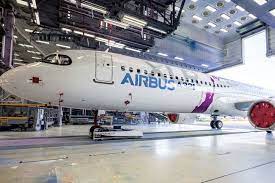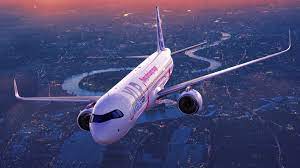FAA request for Airbus to change the A321XLR fuselage: report
Regarding safety issues with the model’s Rear Center Tank, the Federal Aviation Administration (FAA) has authorized design standards for specific Airbus A321XLR aircraft parts (RCT).
The FAA document, which Reuters obtained on December 8, 2022, states that Airbus will be required to modify the A321XLR’s fuselage.
The FAA stated that Airbus will need to lower half of the fuselage at the longitudinal RCT area because the RTC tank is located at the lower fuselage area, partially replacing the rear cargo compartment compared to prior generation aircraft.
According to the document, the space needs to be made fire-resistant to reduce any potential dangers to passenger safety.
According to the FAA, the modification is required “to establish a degree of safety equivalent to that set by the present airworthiness requirements.”

However, given that the upgrades to the fire safety design surrounding the tank may add more weight, industry insiders question whether the design adjustments will limit the A321XLR range.
What makes the A321XLR unique?
With a maximum range of 4,700 nautical miles (8,700 kilometers), the A321XLR narrow-body jet, which made its formal debut at the 2019 Paris Air Show,
Allows its operators to offer longer flights at a lower cost than they would with larger twin-aisle aircraft.
The special range is made possible by a permanent RCT with a fuel capacity of 12,900 liters. The A321XLR can travel farther between cities like New York (JFK) and Rome (FCO).
Tokyo (HND) and Sydney (SYD), or Houston (IAH) and Santiago (SCL) without stopping for refueling because to the RTC design solution.

In comparison to previous-generation aircraft, the plane uses 30% less fuel per seat, claims Airbus.
According to Airbus, the aircraft’s designers also strengthened the landing gear and improved the wing trailing-edge flap to improve takeoff performance.
When will the A321XLR begin receiving orders for goods?
The A321XLR was anticipated to go into service in 2021 or 2022. Due to COVID-19 pandemic-related supply chain difficulties, it did not, however.
In June 2022, the aircraft made its maiden flight. The launch date was postponed to late 2023, but the manufacturer continued to put off the event while blaming regulatory concerns.
The European aircraft manufacturer now anticipates that deliveries will begin in 2024.




